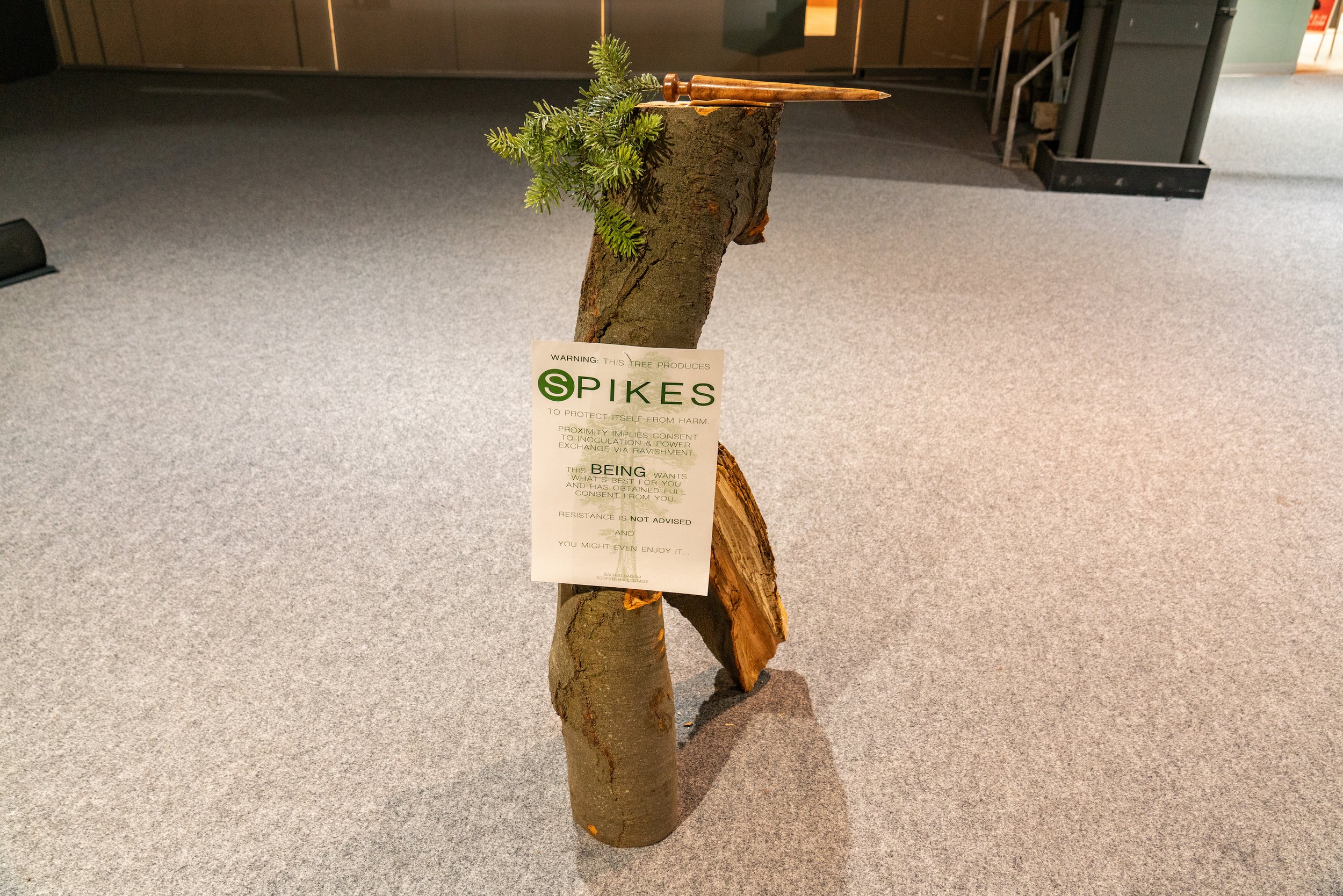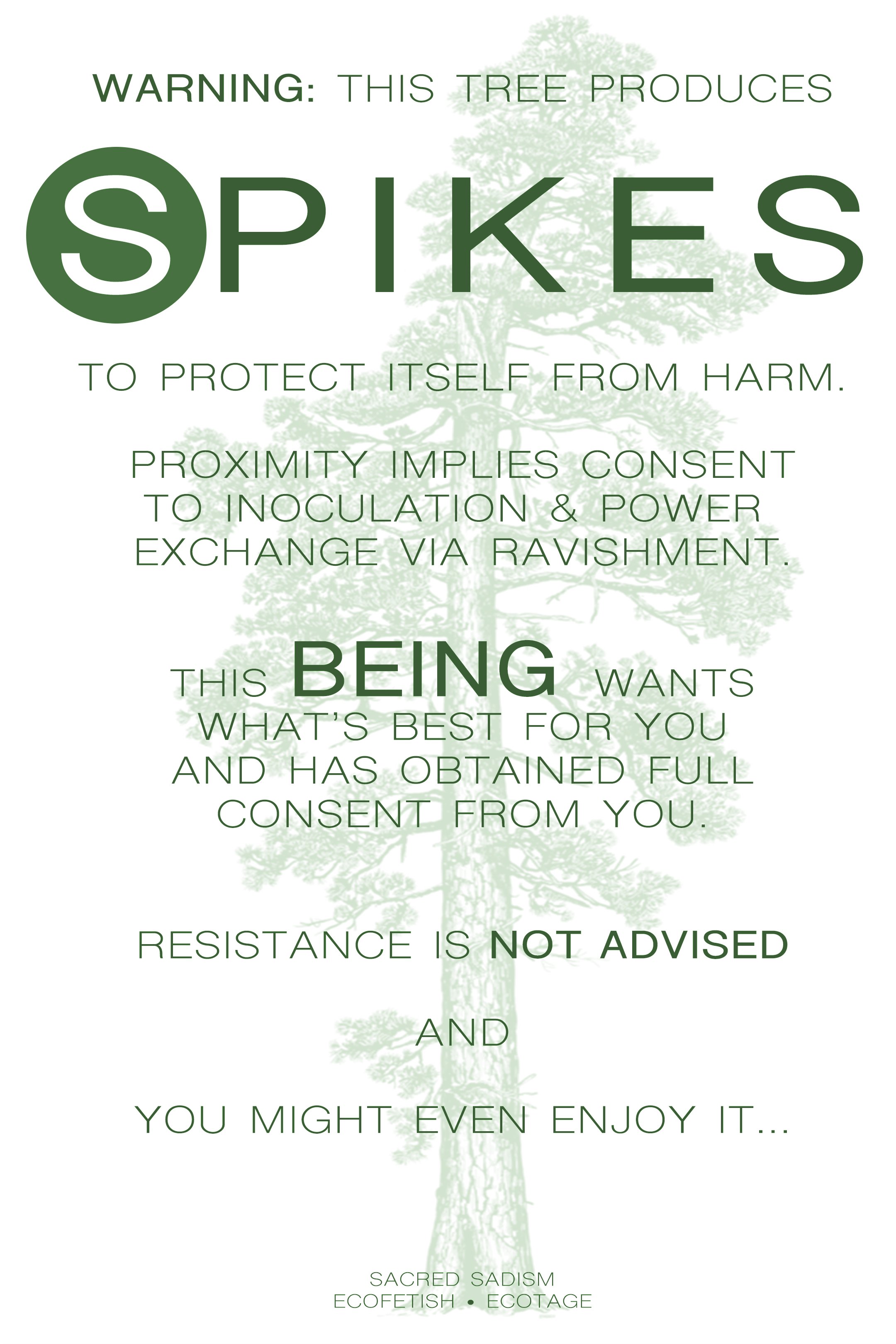Spiked!, 2021. Mixed media, salvaged elm, zinc alloy, plastic pine bough, 12x18 poster print, salvaged log. Dimensions variable
Presented at Power Play; In Excess Exhibition for Creamcake’s 3hd Festival, Berlin, DE.
“Spiked! is a conceptual buttplug and poster that alludes to an ecofetish ravishment fantasy. It ties in elements of ecotage, hentai, consensual-non-consent and anarchist direct action.
The basis for this fantasy are the “tree spiking” interventions enacted by forest protector environmental activists. During these interventions they drive large metal spikes into old growth trees to deter logging companies from cutting down these trees. Because of the high risk of injury associated with cutting down a “spiked” tree, activists mark the trees they spike with posters warning of the danger of cutting the tree. In theory, if a logger still cuts a tree which is marked as spiked they consent to the possibility of damaging their saw and/or person. A sort of “risk-aware” logging.
In this fantasy we imagine an inverted power and consent scenario where the tree is no longer a passive victim of the lumberjack’s saw or activists’ spike, but has devised its own form of protection by growing menacing, animate, penetrative spikes of it’s own. This ravishment fantasy draws from popular vine and tentacle hentai pornography in which an unsuspecting passer-by becomes ensnared in the trees lustful branches and vines.
The tree, however, has chosen to post a sign that warns of its desires and attempts to gain consent through the vague pronouncement of agreement by proximity. Consent seems less to be freely given, and more to be a performative gesture by which the tree might enact its desires, whether the victim/player truly consents or not. The tree even goes so far as to try to convince the viewer it knows what’s best for them; recreating the paternalism of the activists’ spike.
This inversion of power calls into question the grey areas present in certain types of BDSM play as well as the grey area of ethical human intervention on natural environments and organisms. When imagining the direct-action origin of this scenario, as well as it’s fantasy role-play, we must ask why one organism becomes more important to protect than another and is there an ethically objective judgement at play when deciding what another being “wants” or doesn’t “want”?
This piece is contextualized within Sacred Sadism’s larger body of work and our explorations of hierarchies of domination and control. It extends our research into human interventions on the non-human world and critiques the self-righteousness of certain kinds of environmental activism. Questions of interspecies consent or the fallacy of seeking this consent continue to guide this work.”






